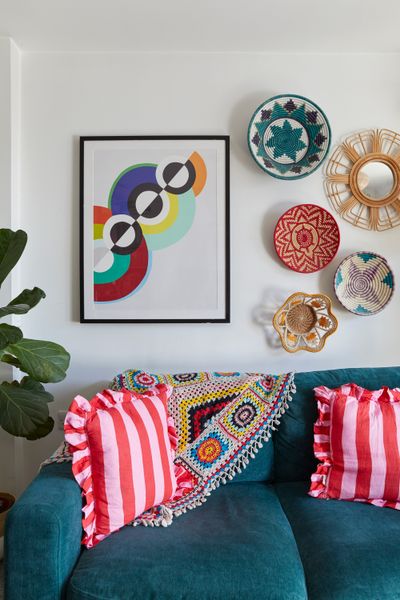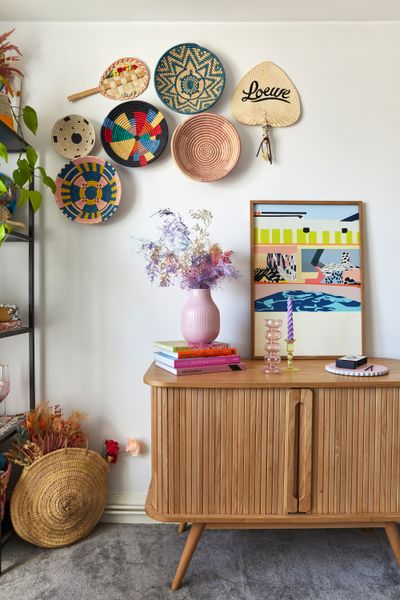For Kristabel Plummer, the London Living Rent program was the key to locking down a long-term one bedroom for several hundred pounds less than similar units in the area.
For fashion and lifestyle content creator Kristabel Plummer, home is more than just a place to live. It’s also her set, her canvas, and often her costar. When she found out that her landlords planned to sell the flat she shared in London’s Muswell Hill neighborhood in early 2020, she wasn’t sure what to do: Losing her lease meant losing her home, and her livelihood.
She’d lived in the North London apartment with a friend since 2014. In six years, her rent had only gone up by £50 (around $65). “Having that rent allowed me to make the most of my content creation,” she explains. “It was all very risky because I only had a little in savings, but it had all worked out.”

Like most renters in London, Kristabel Plummer is nervous about putting nails in her walls. Instead, she’s found success with Command strips. “I’ve got some prints that have fallen down,” she says, “but there’s a whole mirror that stayed up for five years.”
Photo: Kasia Fiszer
“I’d been very lucky,” Kristabel adds—and as she prepared to reenter the rental market, luck was what she needed most. As with most cosmopolitan capitals, London’s rental market is tense and tight. Ask around and you’ll find horror stories near and far: It’s a market known for no-fault evictions, loosely protected leases, and unregulated rents that are always on the rise. Today, a vanishingly narrow slice of Londoners can get onto the property ladder themselves. For everyone else? Forget about it.
When she began posting about her apartment search on social media, a follower reached out with a lifeline: the London Living Rent scheme. Under the program, middle-income renters can access affordable rental properties. The listings are more stable, often longer-term, and prices are benchmarked against local household income, not pegged to the value of properties in the neighborhood.
The program bases rents for two-bedroom properties at one third of the local median household income. Rents for one-bedroom apartments are 10 percent lower, and rents for all individual homes must be at least 20 percent less than their assessed market rent.

Kristabel started collecting bowls while shopping on Black Pound Day, an initiative that helped connect shoppers with Black-owned businesses after the killing of George Floyd.
Photo: Kasia Fiszer
Kristabel had been informed of her landlord’s decision to sell at the end of 2019, and by February, she was deep in the classified ads without luck. When she turned to the London Living Rent Scheme she found a property where she could live alone, listed for £200 to £500 less than similar units in the area. Available rentals got swiped up quickly, so she knew she needed to act without hesitation.
“They don’t offer many details—I don’t actually know what the square footage is, and because it’s never been on sale, I don’t even know how much this place would cost to buy,” she says. “I literally had a five-minute viewing; they were painting, and they hadn’t even put the carpets in.”

The 37-year-old content creator describes her approach to decorating as “a multicultural mash-up.” She outfitted her flat with travel mementos, prints, and plants she’s collected over the years.
Photo: Kasia Fiszer
See the full story on Dwell.com: Rental Revamp: How a Creator Found a Flat in London’s Tight Housing Market—and Made It Her Own
Related stories:


